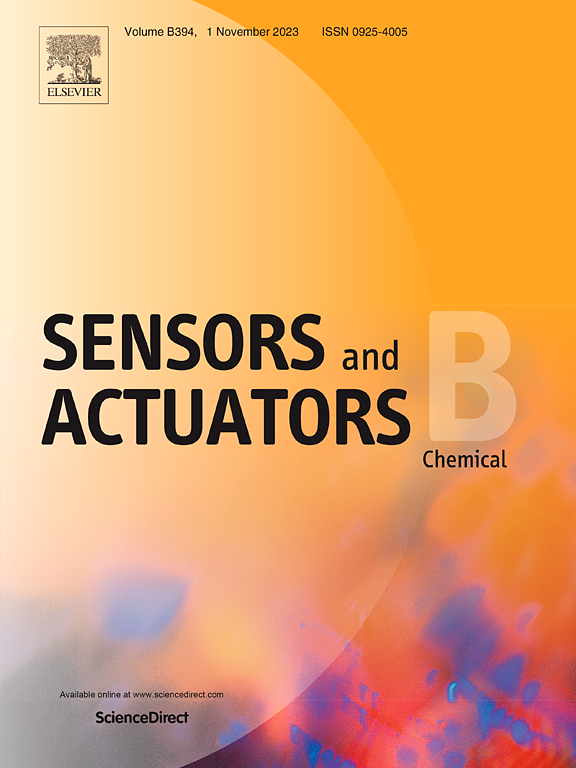Electrochemiluminescence sensor based on the quenching effect of MOF-199 nanomaterials towards ternary semiconductor CdIn2S4 for sensitive analysis of D-dimers
IF 8
1区 化学
Q1 CHEMISTRY, ANALYTICAL
引用次数: 0
Abstract
Ternary metal sulfide semiconductors demonstrate considerable potential for electrochemiluminescence (ECL) applications, because of their high charge carrier mobility and good stability. Herein, CdIn2S4 was innovatively employed as a luminescent material owing to its excellent near-infrared (NIR) ECL emission. Its narrow bandgap, excellent solubility, and stability in aqueous solutions prevented electrode passivation and enhanced the ECL intensity, efficiency, and stability. The MOF-199 nanomaterial featuring a pyramid structure was employed as a quenching probe, exhibiting a dual-quenching effect based on electron and ECL energy transfers, facilitated by energy-level matching and spectral overlapping with luminescent CdIn2S4. The dual-quenching strategy considerably enhanced the quenching efficiency of the probe. Therefore, based on CdIn2S4 exhibiting an excellent luminescence performance and MOF-199 demonstrating an exceptional quenching effect, a novel quenching-type sandwich immunosensor was developed for the sensitive detection of D-dimers. The detection limit of the sensor was 8.51 fg/mL. Furthermore, the sensor exhibited excellent specificity, reproducibility, and stability. The proposed approach offers a novel theoretical framework and methodological guidance for the detection of biomarkers and, provides valuable insights for the development of new luminescent materials.
基于MOF-199纳米材料对三元半导体CdIn2S4猝灭效应的电化学发光传感器用于d -二聚体的灵敏分析
三元金属硫化物半导体由于其高载流子迁移率和良好的稳定性,在电化学发光(ECL)领域具有相当大的应用潜力。由于CdIn2S4具有优异的近红外(NIR) ECL发射特性,因此创新地将其用作发光材料。其窄带隙、优异的溶解度和在水溶液中的稳定性防止了电极钝化,提高了ECL强度、效率和稳定性。采用具有金字塔结构的MOF-199纳米材料作为猝灭探针,通过与发光CdIn2S4的能级匹配和光谱重叠,表现出基于电子和ECL能量转移的双猝灭效应。双淬火策略大大提高了探针的淬火效率。因此,基于CdIn2S4优异的发光性能和MOF-199优异的猝灭效应,研制了一种新型猝灭型三明治免疫传感器,用于d -二聚体的灵敏检测。传感器的检出限为8.51 fg/mL。此外,该传感器具有良好的特异性、重复性和稳定性。该方法为生物标志物的检测提供了新的理论框架和方法指导,并为新型发光材料的开发提供了有价值的见解。
本文章由计算机程序翻译,如有差异,请以英文原文为准。
求助全文
约1分钟内获得全文
求助全文
来源期刊

Sensors and Actuators B: Chemical
工程技术-电化学
CiteScore
14.60
自引率
11.90%
发文量
1776
审稿时长
3.2 months
期刊介绍:
Sensors & Actuators, B: Chemical is an international journal focused on the research and development of chemical transducers. It covers chemical sensors and biosensors, chemical actuators, and analytical microsystems. The journal is interdisciplinary, aiming to publish original works showcasing substantial advancements beyond the current state of the art in these fields, with practical applicability to solving meaningful analytical problems. Review articles are accepted by invitation from an Editor of the journal.
 求助内容:
求助内容: 应助结果提醒方式:
应助结果提醒方式:


